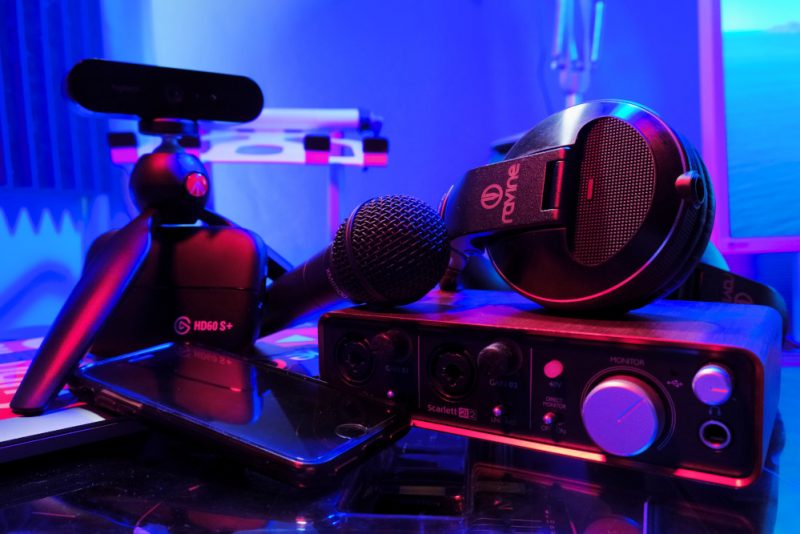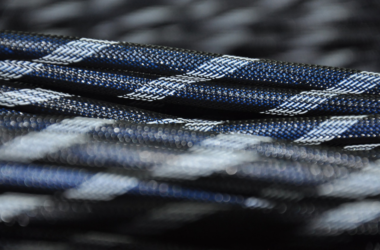Content creation is an art as old as time itself; however, the mediums have changed throughout human history. First, it was cave paintings, then paper, books, audio, and today’s video. As computation, compression, and storage capabilities increased over the past decade, video became the ultimate format for generating and consuming content. Video is the easiest way to consume large amounts of content, and that is why we see such a boost in the popularity of platforms such as Youtube, Twitch, and Ticktock.
These mediums are modern substitutes for unpolished walls and rugged paper sheets… before you start wondering why you’re being escorted through human history when you just clicked on a capture card article, let’s dispense with the sanctimony and get to the point: PCIe capture cards.
If you are using a video that wasn’t generated on your computer, you will need a card to capture it. Capture cards are used by filmmakers, youtube streamers, online gamers, and many more. These cards are either portable, which means they use USB interfaces or internal, which usually refers to PCIe interface. This article will focus on cards that use PCIe to transfer data and communicate with your CPU/GPU.
As with any mainstream hardware, there is an assortment of devices on the market, and it might be pretty tedious to go through all of them and still not end up with your perfect card. So we’ve conjured up a list containing the best devices on the market right now and what they offer. Take a look and be sure to go through the buying guide at the end, which will help you decide what you need.
Table of Contents
Comparison Table – Best PCIe Capture Cards
| Image | Product | Details | Check Price |
|---|---|---|---|
 | Elgato Game Capture HD60 Pro | Max Recording Res: 1080p@60Hz Max Passthrough Res: 1080p@60Hz Hardware Encoder: H264 HDMI Ports: 1 in and 1 out | Check on Amazon |
 | AVerMedia Live Gamer Duo | Max Recording Res: 1080p@60Hz Max Passthrough Res: 4k@60Hz Hardware Encoder: No HDMI Ports: 2 in and 1 out. | Check on Amazon |
 | Elgato 4k60 Pro | Max. Recording Res: 4k@60Hz Max. Passthrough Res: 4k@60Hz Hardware Encoder: H264 HDMI Ports: 1 in and 1 out | Check on Amazon |
 | AVermedia Live Gamer 4k | Max. Recording Res: 4k@60Hz Max. Passthrough Res: 4k@60Hz Hardware Encoder: Software only HDMI Ports: 1 in and 1 out | Check on Amazon |
 | Blackmagic Intensity Pro 4k | Max. Recording Res: 4k@30Hz (NTSC/PAL) Max. Passthrough Res: 4k@30Hz Hardware Encoder: Yes HDMI Ports: 1 in and 1 out | Check on Amazon |
1. Elgato HD60 Pro – The ultimate budget capture card!
It was a struggle to choose between a 4k card or a 1080p card for the top spot, and we finally landed on the Elgato HD60Pro. For most streamers, 1080p video will suffice. Add a hardware encoder to that, and you’ve got speed with efficiency, the complete package.
When it comes to video capture cards, Elgato has established itself as the market standard. Every Elgato card leads the rest of the industry in its particular category, whether it’s 4k cards, internal cards, or 1080p cards. Although released before the 4k pro, HD60 Pro has almost all the functionality at 1080p, and it has its own hardware encoder, firmly placing it a level above its competitors.
Capture Quality
If you don’t need 4k, the card won’t disappoint you in any way. The HD60 Pro can record up to 1080p at 60Hz; lesser configurations are available if you want to save up on computing power and hard drive space. In addition, the card provides unlimited capture as long you have sufficient space on the card.
Talking of space, we have to mention that the H.264 encoder will work wonders for efficient compression and saving up storage space.
[highligtbox]The encoder also takes the burden off your PC’s computing power, and the entire streaming process becomes more reliable and efficient.[/highligtbox]Interface
The card connects to your computer’s motherboard via a PCIe x1 bus, which is more than sufficient for 1080p streaming. In addition, the transfer rate is 60Mbps, more than what Avermedia offers in its 1080p cards.
Instant Gameview
One of the really cool features that come with all current Elgato cards is the Instant Gameview. You can watch what is going on on your display along with your commentary and webcam feed as it happens. Nothing is instant, of course, and there is a slight latency.
Flashback Recording
The card offers to go back in time and record from a particular frame. The amount of frame travel can be set according to your storage space. Moreover, you get live commentary which you can monitor via the Instant Gameview.
System Requirements
- Windows 10 64-bit
- 4th Gen. Quad-Core, Intel Core i5 or better
- Intel HD or Nvidia GeForce GTX 600 or better
Key Features
- Hardware Encoder
- No latency (negligible) in passthrough video
- Flashback Recording and Commentary
- Instant Gameview
- PCIe x 4 bus
The Elgato HD60 Pro is masterfully built for live streaming and recording. It has a wide range of features and offers a hardware encoder to remove the burden from your computer. Most users do not need 4k, so this card ends up at the top of our list.
- Hardware Encoder and negligible latency are very rare in this price range.
- You can experience the stream in real-time as your viewers see it
- It isn’t too heavy or oversized, fits inside most laptops.
- Easy to install and use
- Minimum editing capabilities offered in the software suite
- No 4k passthrough, so 4k videos will be downgraded.
2. AVerMedia Live Gamer Duo – Two cards for the price of one!
When you are a new company in the electronics market and are trying to take on the established kingpins, you can’t just put the same products out and expect to shake up your competitor. So Avermedia threw a curveball with its Live Gamer Duo card. Previously, content creators had to drop down to generic sub-par card manufacturers to get two inputs on a card or simply buy two cards.
You can hook up two cameras or a console and a camera to your PC and stream seamlessly while recording.
That has changed with the introduction of the Live Gamer Duo, which offers the functionality of two capture cards in one compact package. In addition, the card allows low latency pass through and recording capability.
Key Features
- Dual HDMI inputs
- Low latency (negligible)
- 4k pass-through on one input
- 1080p 60Hz HDR recording
- sRGB lighting on the device
Capture Quality
One of the inputs allows up to 4k pass-through at 60Hz while recording at 1080p and 60Hz. Higher frame rates can pass through at 1440p and 1080p (up to 240Hz depending on resolution). The second HDMI 1.4 input can record up to 1080p at 60Hz, sufficient for all cameras popular with live streamers. All downscaling is done on board, which means the latency is virtually zero. AverMedia specifies that the card uses the encoder on the connected GPU.
Connect your PC/console to the first input to record 1080p HDR@60Hz without experiencing any latency, while the second input can be used by video cameras.
The PCIe x4 Gen.2 bus interface is closer to the higher end of the spectrum, and the compressed videos are stored in MPEG format.
The card is compatible with OBStudios, Xsplit, and other popular editing suites.
System Requirements
- Windows® 10 x64
- Intel® i5-6XXX / AMD Ryzen 5 1600 or above
- NVIDIA® GTX 1050 / AMD R7 560* or above
- RAM: 8 GB RAM
The Avermedia Live Pro Mini is an excellent choice for streamers who like to use dedicated cameras because you can get away with one card and save up on cables and device clutter as well, both inside your PC and on your desk. Couple that with 4k pass-through, and most gamers won’t need to look elsewhere.
- Dual Inputs reduce the need for extra devices and cables
- 4k pass-through means you can enjoy seamless gaming
- Very low latency for the pass-through
- The card-pc interface is quite fast.
- The downscaling of refresh rate at 4k might be a problem for first-person shooter games.
- No dedicated encoder hardware
3. Elgato 4k60Pro – The best 4k capture card for professionals
No other card on this list does more justice to the word “pro” than the Elgato 4k60Pro. For content creators who want crisp 4k video with HDR, it doesn’t get much better than this capture card. In terms of functionality, it offers everything except the hardware encoder. However, the interface bus is much more advanced (PCIe x 4) than the HD60 Pro, so any latency that may have occurred due to off-board encoding is obliterated. The wide array of features, emblematic of Elgato cards, make live streaming and instant recording a lot more detail-oriented.
Key Features
- 4k video capture at 60Hz
- Instant Gameview
- Commentary and Flashback Recording
- Higher bitrate
Capture Quality
4K60 Pro’s video capture is a class above the rest of Elgato’s cards. The external 4k60S+ might have higher bit rates, but it suffers from latency and does not allow higher frame rates to pass through. The 4K60 Pro, however, isn’t prone to any of these limitations.
The card can capture 4k HDR content at 60Hz or 1080p content at 144Hz/240Hz. Combine that with a PCIe x 4 bus that does not allow for any latency, and you can stream 4k content and also enjoy high-end games that require higher refresh rates.
This card supports multi-app and multi-device features, which means you can view your content in different apps and install multiple cards in series, respectively.
The card’s bitrate is also significantly higher than its competitors (140Mbps), ensuring sharp and high-quality video capture. All captured videos are neatly displayed in the video library.Like other Elgato cards, Instant Gameview allows you to watch your stream live on a separate monitor, while flashback recording ensures you don’t miss any candid moments.
System Requirements
- Windows 10 (64-bits)
- 6th Gen Intel Corei7 or higher
- Nvidia GeForce GTX10 Series or higher
- PCIe x4/x8/x16 slot
The only thing missing in the HD60Pro was 4k capture capability, and the Elgato 4k60 Pro is the complete package. If you need 4k content or are willing to spend extra, we recommend you buy this card over the HD60Pro. It has a much better range of resolutions and refresh rates, coupled with excellent data transfer capabilities, making it one of the highest quality video producers on the market.
- A wide range of video capture (4k at 60Hz, 1080p at 144/240Hz, and lesser configurations)
- HDR10 Capture
- Instant Gameview allows you to watch your stream live with commentary
- High-Quality content due to the better bitrates
- Easy to install
- No latency on pass-through
- H.264 encoder absent
- Does not support AMD Graphics Card currently.
4. AVerMedia Live Gamer 4k – The perfect 4k card for your home studio
AverMedia’s Live Gamer 4k is one of the best 4k capture cards on the market and was only barely beaten by the Elgato 4k60 Pro. The card offers similar functionality compared to Elgato, but we were a bit weary of the PCIe interface. The bandwidth might not be entirely supported by the PCI e x 4 bus, and you might have to move to x8 or x16, but that depends more on your motherboard than the card. Apart from this minor discrepancy, it is hard to decide between AVerMedia and Elgato, and we’re sure being the younger company, AVerMedia will be content with that.
However, AverMedia’s software suite is far better than Elgato’s, so if you do not have any personal favorites, the free propriety software will be just as good a choice as some of the other software suites.Key Features
- 4k capture at 60HZ, higher refresh rates at 1080p
- HDR capture and pass-through
- Excellent software suite
- PCIe x4 Interface
- RGB color lighting (can be turned off)
Capture Quality
AVerMedia Live 4K’s capture video capture capability is similar to 4K60 Pro’s, with a slight difference perhaps due to different bitrates. The card can capture 4k HDR content at 60Hz or higher frame rates (up to 240Hz) at 1080p. A configuration utility comes with the software suite, which allows you to select the resolution/frame rate bracket from your PC without connecting a streaming monitor.
AVerMedia does not specify what bitrates the card uses; however, customer experiences have indicated that the rate might be lower than 120Mbps. In addition, because of the extensive software suite, including the software encoder, the PCIe interface is jam-packed with data. You might need to move to x8 or x16 buses depending on what kind of motherboard you are using or how extensive your video editing needs are. Unfortunately, we can not give a general consensus on this, so you’ll have to experience it yourself, but it’s not something to be worried about, just a side note.
Unlike Elgato’s cards, AVerMedia products are compatible with AMD GPUs but only for small resolutions. For HDR content at 1080p or 4k, you’ll need to shift to Nvidea.
System Requirements
- Windows 10 (64-bit)
- Intel Core™ i5-6XXX/ AMD Ryzen™ 5 1600 or above
- 8GB RAM
- Nvidia GTX 1060 or above
The AVerMedia Live Gamer 4k is perfect for users who are new to 4k capture or only use it to stream on online platforms. However, because of its software encoder, extensive video editing might consume
- Price is lower than Elgato’s 4k card
- Software Suite provides extensive functionality
- AMD Compatibility at lower resolutions
- Low latency
- Software encoders use a lot of bandwidth. A lot of bandwidth which can be a big no-no for advanced content editors. Other than that, the card is perfect for your home studio.
5. Blackmagic Intensity Pro 4k – The best PCIe card for professional content creators
Since the gaming market is quite lucrative, many electronics manufacturers sacrifice editing functionality to provide higher frame rates and response times to attract gamers. However, as the gaming market grows, professional content creators such as filmmakers might feel that many products on the market are overkilled in some areas while quite rudimentary in other vital functions.
Blackmagic is an established name in the video production market, and its Intensity Pro 4k is explicitly directed at these content creators. Although this card can work for many games, it grows into its own in the content editing space.
Key Features
- Analog breakout port
- Up to 4k capture at 30Hz, 1080p at 60Hz, NTSC and PAL
- Compatible with a wide variety of software suites such as Adobe, Magix, DaVinci, Final Cut, etc
- Playback for SD, HD, and Ultra HD
Capture Quality
The card can capture SD, HD, and Ultra HD Content through 10 bits signals, which means that instead of focusing on higher refresh rates, the users will get a much wider color gamut, sharpness, and better sampling. The video quality is designed to provide content for television, so the focus is on sharpness and color variation rather than the frame rate. Moreover, NSTC/PAL standards, widely accepted in the film industry, are comfortably captured and displayed by Intensity Pro 4k.
Many ASMRists use this card, which is a testament to its sound capture capabilities.
In addition to the HDMI Input/Output, an analog breakout connection port is also available, making the card compatible with a wide range of analog devices, including older analog outputs, such as those from VHS or tape.
Intensity Pro 4k is also the most flexible software-operated card on this list, compatible with various modern high-end editing software such as Adobe Graphics Suite, Final Cut Pro, Magix, Media Express, and Avid Media. In addition, DaVinci Resolve, which is used extensively in Hollywood, is perfectly compatible with this card;, if you buy the costlier package of the card, limited versions of most of these software’s are included.
System Requirements
- Compatible with Windows 8 or above, Linux and Mac 10.15 or above
- PCIe x4 preferred
- Most AMD or Nvidia GPU
- 8GB RAM or higher
- SSD preferred
This card offers the most value for your money if you are a professional content creator. Users that work in the film industry will immediately fall in love with Blackmagic’s Intensity Pro 4k because of its video quality and audio protection. Gamers who prefer higher refresh rates might need to look elsewhere, though.
- Compatible with all film standards
- Extensive software compatibility
- Analog Break out connection for older devices
- Highly reliable while operating
- Installation requires time
- 4k resolution not available for 29.9Hz or higher.
The Ultimate Buying Guide – Best PCIe Capture Cards
Resolution
This is the most critical factor in setting up the price of a capture card. You need to know what will be the resolution and refresh rate of the video you are capturing.
If you are a pro-gamer who wants to stream, you’re going to need to at least 1080p with high refresh rates (more than 60Hz). If you plan on editing the video extensively, you should get high resolutions (4k) so that zooming and color-rendering can be done without compromising on the quality.
You don’t need higher frame rates if you’re running live streams (non-gaming content), but it’ll be good to get a card that supports higher resolution and wider color gamuts, both of which are dependant on the transfer speed of the PCI bus.
Input Standards
The communication protocol that the card uses for the recording device and the displaying device is also quite important. The most common protocol today is HDMI 2.0. Today, almost all monitors and cameras have an HDMI port that you can use to send analog or digital video. So HDMI 2.0 is sufficient for most purposes.
HDMI 2.0 can handle up to 60Hz at Ultra HD(4k) and as high as 240Hz at 1080p, so you’re good. The latest HDMI 2.1 can handle native 4k at 120Hz.
Keep in mind that HDMI is a relatively new protocol, so retro consoles such as Nintendo 64 use the component Video Output.
If most of the content you are creating uses current standards, HDMI is suitable, but you might need a more comprehensive array of inputs for the older device.
Interface
The interface we’re referring to is between the PC and the card. Within the scope of this article, we only use the PCIe bus for data transfer. You can’t go wrong with PCIe if you want higher bandwidth and speeds. That is why PCIe is the preferred interface for SSD’s, GPU’s and WiFi adaptors.
USB is mainly used for its more comprehensive compatibility range, making it easier to carry your capture card on the go and connect to most computers.
Software
Capture Cards usually come with their proprietary software. If you are already using another studio such as OBStudio or Xsplit, you probably won’t bother with the card’s software. However, if you are a new user, the software included can be pretty significant.
One might think that the software will only connect the card to my pc, so I don’t need a lot of functionality in it, but the truth is that the software is like a gateway to the card. If it is poorly built or not wholly compatible with the PC or OS, you’ll have problems capturing the full range of video data at high speeds.
Recently, cheap capture cards with sup-par software have been introduced in the market because of mass production.
These cards will give you fundamental functionality at average speeds, but if you want high-quality or genre-specific content (streamers and gamers usually do), then this limited software won’t let you go far. In other words, you get what you pay for!
On the other hand, standard video card manufacturers spend a lot of R&D on their products, and you won’t have any problems with the included software on any of the devices on this list.
Frequently Asked Question – Best PCIe Capture Cards
Is a PCIe Capture Card better than USB?
PCIe buses are usually placed on a computer’s motherboard, which means PCIe Capture Cards are used internally. USB capture cards can be connected via a USB port and cable, so they are portable. In addition, PCIe’s data transfer capability is better, so PCIe cards are preferred for high-quality content and editing.
What is a hardware encoder?
An encoder can be software installed on the streaming computer or a hardware component attached to the card. Software encoders use the computing power of your CPU and GPU to encode, which means your PC should have enough computational ability to provide for the capture card while performing other tasks as well. In addition, data moves between the capture card and your PC via the interface bus (USB or PCIe), limiting its capability to transfer video data for other purposes (streaming/pass-through).
PCIe capture cards convert analog signals to digital and compress them for storage via an encoder.
Thus software encoders generally exhibit latency.
On the other hand, hardware encoders encode the video on the card, thus freeing up computational power and data transfer resources. However, hardware encoders are not flexible and have limited functionality. In contrast, software encoders provide more options to edit, store or compress.
What is the difference between a capture card and a graphics card?
A capture card does only one job (generally); it takes the analog video output from a source and delivers it to a CPU/GPU for processing. The graphics card, on which the GPU is placed, then does all sorts of things with that captured video.
For example, it can process and generate frames, reproduce colors from the captured signal and work with other components such as the CPU or a display to synchronize everything and produce the video output you are looking for.
A capture card’s job seems simple compared to the vast computational capability of a graphics card, but in reality, capturing video is a lot harder than it looks.
Does an HDMI port mean I have a capture card?
No, the HDMI port only means you can input or output already captured or processed video. For example, a capture card has an HDMI-in port that takes the video signal, the card captures it and sends it to the CPU/GPU, all while the HDMI-out delivers the captured signal as it is(ideally) to a displaying device.
Does a capture card give more computational power to my PC?
On the contrary, a capture card uses up resources on your computer. Think of it this way, the card takes resources from your PC and uses them to do a specific function.





